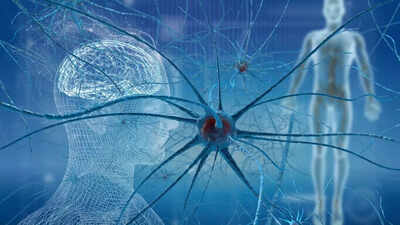ARTICLE AD BOX

For decades, scientists believed the brain was a fixed organ, that you were born with all the brain cells you’d ever have, and once they died through age, injury, or disease, they were gone for good.
But research has upended that old belief. We now know the brain can continue to create new cells, called neurons, even late into life through a process known as neurogenesis. While most of our roughly 100 billion brain cells formed before birth, the production of new ones doesn’t shut down completely with age.In fact, one area, the hippocampus, a pair of small, seahorse-shaped structures deep in the brain that handle learning and memory, can generate 700 to 1,500 new neurons every day.
That may sound like a drop in the ocean, but it’s enough to strengthen existing brain networks and support cognitive health. Ongoing studies suggest there are ways to encourage this process, and regular exercise is one of the most powerful.
Neuroscientist Dr. Robert Love, who specializes in helping people prevent Alzheimer’s disease with science-backed strategies, says certain types of movement can directly support neurogenesis, and it’s not just about cardio.
Resistance training

Think weightlifting, push-ups, or any workout that challenges your muscles against resistance. Dr Love explains that when you engage in strength training, your muscles release a powerful protein called Brain-Derived Neurotrophic Factor (BDNF). This isn’t just any chemical, BDNF acts like a growth fertilizer for your brain, stimulating the formation of new neurons and repairing existing ones. Along with that, resistance training boosts growth hormones that play a direct role in keeping your brain healthy.
In short, build stronger muscles, and your brain will thank you.
Dual-task exercises

Your brain loves a challenge, especially when it involves doing two things at once. Imagine going for a brisk walk while having an engaging conversation, or listening to a thought-provoking podcast. This combination of physical movement and mental engagement activates multiple brain regions at the same time, strengthening neural connections. Not all multitasking counts; passively watching TV won’t do much.
But activities like dancing, especially learning new routines in a class, are excellent because they require coordination, memory, and attention all at once.
Leg exercises

It turns out your legs are more important to your brain than you might think. In a fascinating study, scientists followed sets of twins for a decade and found that the twin with stronger legs was less likely to develop Alzheimer’s disease. The connection? Strong leg muscles help regulate the release of chemicals that support brain health and maintain blood flow to the brain.
Even something as simple as doing 10 squats a day can make a difference. Remember: strong legs often mean a strong brain.Disclaimer: The information in this article is for general educational purposes only and is not a substitute for professional medical advice, diagnosis, or treatment. Always consult a qualified healthcare provider before starting any new exercise or lifestyle program, especially if you have existing medical conditions or concerns.



.png)
.png)
.png)
















 21 hours ago
5
21 hours ago
5









 English (US) ·
English (US) ·